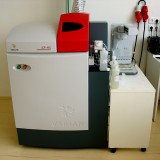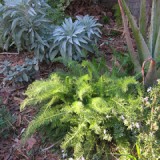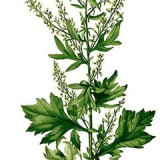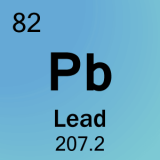
File this ad under “bad ideas.”
The benefits of growing food in cities (nutrition, exposure to nature) outweigh the very low risks of lead contamination. This is the conclusion of a recent University of Washington study:
It is highly unlikely that urban agriculture will increase incidences of elevated blood Pb for children in urban areas. This is due to the high likelihood that agriculture will improve soils in urban areas, resulting in reduced bioavailability of soil Pb and reduced fugitive dust. Plant uptake of Pb is also typically very low. The exceptions are low-growing leafy crops where soil-splash particle contamination is more likely and expaneded hypocotyl root vegetalbes (e.g. carrot). However even with higher bioaccumulation factors, it is not clear that the Pb in root vegetables or any other crop will be absorbed after eating.
The paper outlines a set of best practices for dealing with contaminated soils. You should always:
- Wash fruits and vegetables from your garden. Also wash your hands and don’t wear shoes in the house.
- Compost, compost, compost! Compost dilutes the overall amount of lead in soil and encourages healthy plant growth which also dilutes the (usually small) amount of lead a plant will uptake. Apply compost annually since it breaks down over time.
- Plant away from painted surfaces of old (lead paint era) buildings.
Some other things to consider especially if you garden with children under 5 years old:
- Don’t eat a lot of carrots, radishes, redbeets or turnips grown in contaminated soil. The edible portion of these plants consist of xylem tissue that traps lead (potatoes are OK since they are phloem fed). That said, you’d have to eat a lot of contaminated root vegetables to elevate lead levels in your blood.
- Adding phosphorus fertilizers will decrease the bioavailability of lead.
- In general root vegetables uptake the most lead, leafy greens less and fruit almost none.
- The most conservative approach is to grow in raised beds.
The main concern is for children under 5 years old. If your soil tests high in lead and you have young ones you should consider doing your edible gardening in raised beds and limit their exposure to garden soils to a few times a month. Mulch and ground covers will also decrease lead exposure in the other parts of your yard.
The paper concludes that for older children and adults, “There is little indication that growing or eating food from urban gardens will result in high Pb (lead) exposure.”






The main risk for small children is not eating produce from a contaminated garden, it’s eating actual dirt with lead in it, or dust around the house from lead paint. So if you have high lead levels in your soil, consider covering it up with some serious ground cover/mulch/whatever because kids put everything in their mouths. In the end, from what I understand, the vast majority of elevated lead cases in small children come from indoor exposure to lead paint. While I think it’s totally true that produce from the garden is a very low risk even for kids, you wouldn’t want to ignore contaminated soil. Crawling babies are at especially high risk for exposure.
WOW, that ad is disturbing. CRAP.
It makes you wonder! I spent the first ten years of my life in houses with lead water pipes as well as lead paint. Not just lead-soldered copper pipes, solid lead! And this was in an area with soft water, so there was a high likelihood of lead leaching into the water. I also had a stash of mercury, which I used to play with regularly, when I wasn’t trying to make explosives out of readily available domestic chemicals.
There’s no knowing the heights I might have reached had I not destroyed my brain with these dangerous toxins in childhood. A Rhodes Scholarship followed by a Nobel Laureate would seem to be the minimum I could have expected.
I’m not really trying to make fun of the dangers of lead here. I just wonder how so many of my generation managed to survive it.
I know that lead is also less bioavailable in alkaline soils, which is the trend in urban soils. I also wonder if lead bioaccumulated in plant tissues wouldn’t be outweighed by all the good vitamins and other nutrients in them, many of which help prevent lead uptake in the body. It would be interesting if someone could do some research on that!